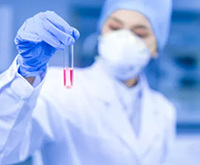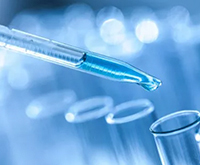Additive
A secondary antibody aids in the detection, sorting, or purification of target antigens by binding to the primary antibody, which directly binds to the target antigen.
Since most primary antibodies originated from just a few host animal species, with nearly all of the antibodies being of the IgG class, it is easy and economical for manufacturers to produce and supply ready-to-use secondary antibodies applicable to most methods and detection systems.
There are many secondary antibody options available for purity level, specificity, and label type no matter the application.

Additive Products
| Antibody | Application |
| Mouse anti-human RBC | For immunodiagnostic: ELISA, LFA, CLIA |
Function of Secondary Antibody Additive
The secondary antibody additive is a designed to be used in combination with primary antibodies to detect target proteins in various immunoassays, like western blots, ELISA, and immunofluorescence.
- Cardiac Markers
-
Tumor Marker
-
PGII
-
G17
- CA50
-
CA125
- CA242
-
CA15-3
- CA19-9
- CA72-4
-
Pepsinogens I (PGI)
-
Human Epididymis 4 (HE4)
- Prostate-Specific Antigen (PSA)
- Squamous Cell Carcinoma (SCC)
- Neuron-Specific Enolase (NSE)
- Cytokeratin 19 Fragment (CYFRA21-1)
- Human Progastrin-releasing Peptide (ProGRP Tumor Marker)
- Protein Induced by Vitamin K Absence or Antagonist-II (PIVKA II Tumor Marker)
- Alpha-fetoprotein(AFP)
-
CEA
-
Human Chitinase 3-like 1
-
PGII
- Inflammatory Marker
- Infectious Disease
- Hormones
- Thyroid Function
- Glucose Metabolism
- Bone Marker
- Others
-
Heterophilic Blocking Reagent
- Animal Diagnostics

















